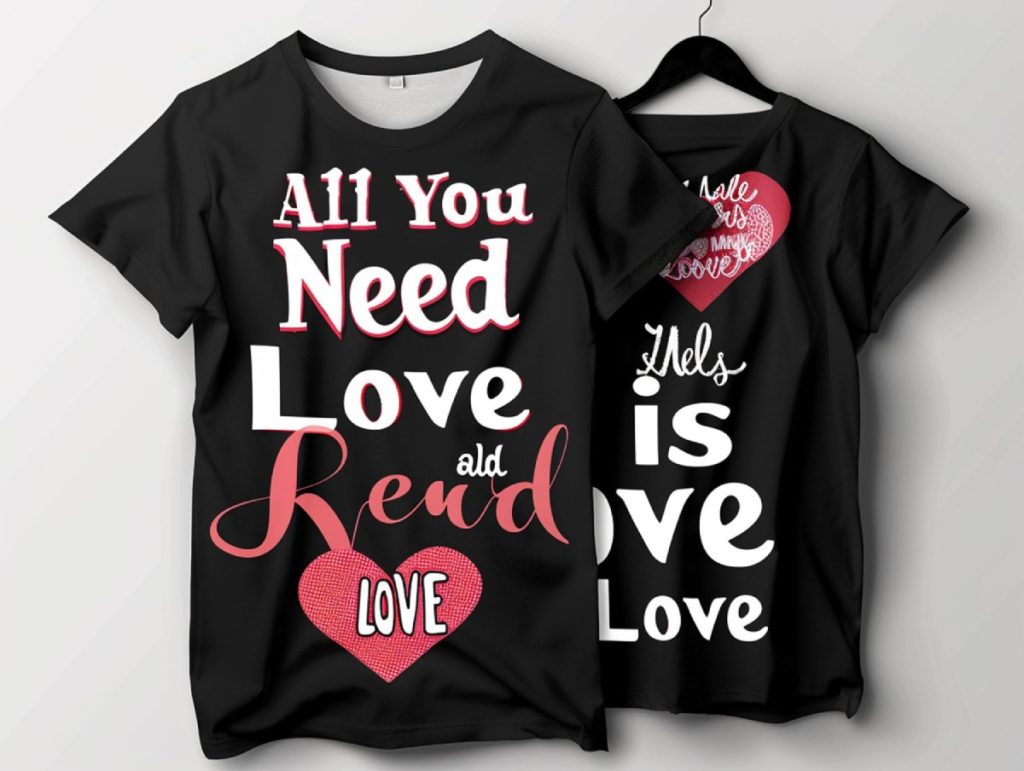In the realm of modern printing, UV DTF (Direct to Film) techniques are revolutionizing the way we produce high-quality prints. This innovative approach harnesses ultraviolet light to cure specialized inks, resulting in prints that exhibit exceptional durability and intricate detailing. As businesses seek to achieve vivid colors and long-lasting results, UV DTF stands out by merging traditional printing methods with cutting-edge technology. By prioritizing durability in printing applications, this technique allows for successful creations that withstand the rigors of time and environmental factors. In this article, we will delve deeper into UV DTF methods to uncover their benefits and their role in promoting eco-friendly printing practices.
UV DTF technology can also be referred to as UV Direct to Film printing, a method that integrates advanced UV printing capabilities with the efficiency of film transfer. This state-of-the-art printing practice leverages Direct to Film technology to produce stunning graphics that boast both durability and precision. Using UV curing processes, printers can achieve fine detail and vibrant colors that significantly enhance the visual appeal of various products. Eco-conscious users will appreciate that this approach minimizes waste, showcasing a commitment to sustainability in printing. By exploring the alternative terms and concepts related to UV DTF, we can gain a broader understanding of its applications and implications for the printing industry.
Maximizing Print Durability with Innovative UV DTF Techniques
The application of UV DTF techniques has revolutionized the concept of durability in printing. With traditional printing methods, inks often succumb to wear and tear, fading under harsh environmental conditions. However, UV DTF technology incorporates ultraviolet light to cure inks, providing an exceptional level of durability that is particularly beneficial for high-use items such as clothing and signage. The durability of these prints leads to lower replacement costs and extended lifespan, which is a significant advantage for businesses aiming for sustainability and reduced operational costs.
Moreover, the focus on enhancing durability has led to serious advancements in ink formulations. Researchers are continually exploring ways to develop inks that resist environmental stressors such as UV light, moisture, and abrasions. For example, the development of hybrid inks that blend the best qualities of traditional and modern printing technologies promises even higher resistance to fading and wear, making UV DTF an invaluable asset in various applications, from promotional materials to outdoor advertising.
Achieving High-Quality Prints with UV DTF Technology
One of the primary benefits of UV DTF techniques is their ability to produce high-quality prints with remarkable detail. This technology allows for intricate designs and gradients that were previously challenging to achieve with traditional methods. High-resolution capabilities mean that images can be reproduced with stunning clarity, capturing the attention of consumers with vibrant colors and sharp lines. This level of detail is particularly sought after in competitive fields, where presentation can significantly affect marketability.
To achieve such impressive quality, UV DTF technology utilizes advanced printers that are capable of precise ink deposition. By leveraging the capabilities of Direct to Film technology, printers can create outputs that not only meet but exceed industry standards. This innovation allows businesses to push creative boundaries, producing personalized products that effectively connect with their target audience, thereby establishing a strong brand presence.
Diverse Applications of UV DTF in Various Industries
The versatility of UV DTF technology is one of its most compelling attributes, making it applicable across a multitude of industries. From fashion apparel and accessories to promotional items and custom packaging, the adaptability of this technology meets diverse market needs. Businesses are increasingly turning to UV DTF printing for customized merchandise that resonates with consumers’ desire for unique and personalized products. This flexibility also extends to different substrates, allowing for creativity that is not limited to traditional printing surfaces.
In addition to personal items, UV DTF technology has made significant inroads into prototyping and product packaging. The quick turnaround time associated with this technology allows businesses to rapidly design, test, and produce marketing materials, enhancing workflow efficiency. Furthermore, with the growing trend towards sustainability, many companies are looking for printing methods that are both eco-friendly and versatile, making UV DTF an appealing choice for forward-thinking brands.
Commitment to Eco-Friendly Practices in UV DTF Printing
With environmental concerns at the forefront of modern business practices, UV DTF technology represents a shift towards more sustainable printing solutions. Manufacturers are increasingly aware of their ecological footprint and are innovating to reduce waste during the printing process. One key advantage of UV DTF techniques is their low-volatile organic compounds (VOCs) formulation, which contributes to a healthier environment both during production and after the printed material reaches the consumer.
In addition to cleaner inks, many businesses are adopting practices such as recycling and utilizing sustainably sourced materials. This commitment to eco-friendly printing not only improves compliance with regulations but also enhances brand loyalty among consumers who prioritize sustainability. By incorporating these practices, companies not only meet the expectations aligned with eco-conscious consumers but also position themselves competitively in a market that increasingly values responsible production.
Market Trends and Future Projections for UV DTF Technologies
The UV DTF printing market is on a trajectory of rapid expansion, fueled by rising demand for high-quality, customizable products. As printing technology continues to evolve, manufacturers are investing in faster and more efficient printers, ensuring they can meet the needs of a dynamic market. Projections indicate that this sector will grow substantially as more companies recognize the advantages of UV DTF technology, particularly in applications that require speed without sacrificing quality.
In addition to performance enhancements, the market is witnessing a shift towards integrated solutions that encompass design, production, and distribution. This trend not only streamlines the printing process but also enables businesses to offer comprehensive services that meet the diverse needs of their clients. As the landscape of digital printing continues to change, UV DTF techniques will play a crucial role in shaping the future of the industry, with innovations leading the way for creative and practical solutions.
Frequently Asked Questions
What is UV DTF technology and how does it enhance print durability?
UV DTF (Direct to Film) technology utilizes UV light to cure inks on a film, significantly enhancing the durability of prints. This innovative process results in prints that are resistant to scratches and fading, making them ideal for high-use applications such as fashion garments and outdoor displays. With recent advancements, UV-cured inks outperform traditional DTF inks, providing longer-lasting prints.
How does UV printing contribute to high-quality prints in UV DTF techniques?
UV printing, as part of the UV DTF technique, allows for the production of high-resolution prints with intricate designs. The precision offered by UV DTF technology enables printers to achieve unparalleled detail and vibrant colors on various substrates. This results in stunning graphics that effectively capture consumer attention and meet the demands of competitive markets.
What industries can benefit from UV DTF printing technology?
UV DTF printing technology is applicable across multiple industries, including fashion, promotional products, signage, and packaging. Its versatility allows businesses to create custom products, catering to the growing consumer demand for personalized merchandise. As compatibility with new substrates increases, the potential applications for UV DTF technology continue to expand.
Is UV DTF technology eco-friendly?
Yes, UV DTF technology incorporates eco-friendly practices by utilizing sustainable ink formulations that reduce waste and promote environmental sustainability. Many manufacturers are focusing on responsible sourcing and production methods, ensuring that the UV DTF printing process aligns with modern ecological standards and meets consumer demands for environmentally responsible practices.
What advancements have been made in UV DTF techniques for print quality?
Recent advancements in UV DTF techniques have significantly improved print quality. These advancements enable printers to achieve higher resolutions and more intricate designs than ever before. Research indicates that innovations in UV printing are enhancing the detail and color vibrancy of prints, making UV DTF a leading choice for high-quality printing solutions.
What are the future projections for the UV DTF printing market?
The UV DTF printing market is expected to experience substantial growth driven by increasing demand for innovative and customizable printing solutions. Advances in digital printing technology aim to enhance efficiency and speed while maintaining print quality. Market research suggests that this trend will lead to significant evolutions in how products are printed and marketed in the near future.
| Key Points | |
|---|---|
| Enhanced Durability | UV DTF inks are resistant to scratching and fading, outperforming traditional inks in environmental stress tests. |
| Detail and Quality of Prints | Capable of producing high-resolution prints with intricate designs, enhancing vibrancy and precision. |
| Diverse Applications Across Industries | Applicable in various sectors like fashion, packaging and signage, promoting custom product solutions. |
| Commitment to Environmental Sustainability | Innovations in eco-friendly inks are helping to align UV DTF practices with sustainability goals. |
| Market Trends and Projections | UV DTF printing is expected to grow with advancements focusing on speed and quality. |
Summary
UV DTF techniques represent a groundbreaking approach in the world of printing, focusing on maximized durability and detail. This technology effectively merges traditional processes with modern innovations, resulting in high-quality prints that are resistant to various types of environmental stress. The advancements in UV DTF not only enhance the longevity of prints but also expand their applications across multiple industries. Furthermore, the commitment to sustainability within this technology is critical in meeting the ecological demands of today’s market. By harnessing these techniques, businesses can significantly improve product offerings while ensuring they contribute positively to environmental goals.



